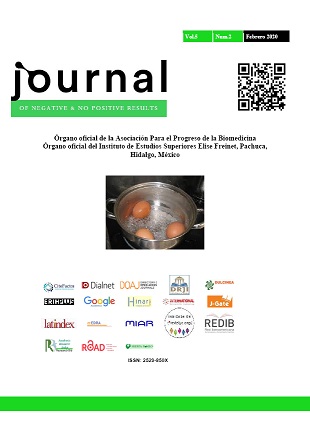Cerebral vasculopathies due to drug abuse in adult patients: A case report
DOI:
https://doi.org/10.19230/jonnpr.3276Keywords:
Acquired vasculopathy, Case report, Cocaine, Drug abuse, Ictus, Moyamoya syndromeAbstract
Introduction. Moyamoya disease is a cerebrovascular disease characterized by progressive stenosis of the arteries of the circle of Willis, conditioning the appearance of an anomalous compensatory vascular network, the moyamoya vessels. These areas are more susceptible to suffering ischemia or haemorrhage.
Case report. A 47-year-old man with symptoms of weakness in the left upper limb and clumsy walk because of left leg, of 5 days' evolution, in relation to cocaine consumption. In arteriography, extensive collateral network compatible with the moyamoya pattern.
Discussion. The chronic consumption of cocaine produces abrupt increase in blood pressure, cerebral vasoconstriction, vasculitis and acute thrombosis, with the consequent development of moyamoya vessels as a compensatory physiological mechanism.
Downloads
References
Espert R, Gadea M, Aliño M, Oltra-Cucarella J, Perpiña C. Enfermedad de moyamoya: aspectos clínicos, neurorradiológicos, neuropsicolológicos y genéticos. Rev Neurol 2018; 66(1):57-64.
Jiménez Yespes CM, Patiño Hoyos MA, Jiménez Obando M. Síndrome de Moyamoya: una respuesta defensiva al daño crónico de un gran vaso cerebral. Reporte de una serie de casos y revisión de la literatura. Acta Neurol Colomb 2018; 34(1):45-53.
Storen EC, Wijdicks EFM, Crum BA, Schultz G. Moyamoya-like vasculopathy from cocaine dependency. Am J Neuroradiol 2000; 21(6):1008-1010.
Schwartz MS, Scott RM. Moyamoya syndrome associated with cocaine abuse. Case report. Neurosurg focus 1998; 5(5):e7.
Published
Issue
Section
License
All accepted originals remain the property of JONNPR. In the event of publication, the authors exclusively transfer their rights of reproduction, distribution, translation and public communication (by any sound, audiovisual or electronic medium or format) of their work. To do so, the authors shall sign a letter transferring these rights when sending the paper via the online manuscript management system.
The articles published in the journal are freely used under the terms of the Creative Commons BY NC SA license, therefore.
You are free to:
Share — copy and redistribute the material in any medium or format
Adapt — remix, transform, and build upon the material
The licensor cannot revoke these freedoms as long as you follow the license terms.
Under the following terms:
Attribution — You must give appropriate credit, provide a link to the license, and indicate if changes were made. You may do so in any reasonable manner, but not in any way that suggests the licensor endorses you or your use.
NonCommercial — You may not use the material for commercial purposes.
ShareAlike — If you remix, transform, or build upon the material, you must distribute your contributions under the same license as the original.
No additional restrictions — You may not apply legal terms or technological measures that legally restrict others from doing anything the license permits.

This work is licensed under a Creative Commons Attribution-NonCommercial-ShareAlike 4.0 International License

























